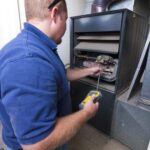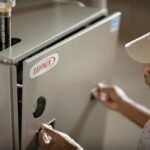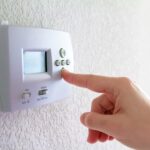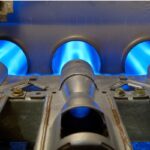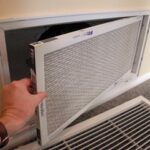If your furnace doesn’t heat or works poorly, this expert DIY guide will help you troubleshoot and fix typical problems.
If your home is heated with a forced-air heating system, a furnace or a heat pump is the heater at the heart of it. Here we look at how to handle furnace problems from a furnace working poorly to a heater not working at all. For heat pump problems, see Heat Pump Troubleshooting & Repairs.
Though forced-air furnaces are normally quite reliable, they can break down. To avoid break downs, it pays to know how to maintain your furnace and fix it when something goes wrong.
Inevitably, a furnace stops working when you need it most. Consequently, fixing becomes urgent very quickly.
The following instructions will help you do the fixing—or at least figure out what needs to be fixed. With a little do-it-yourself experience and the proper guidance, you can troubleshoot and repair a variety of furnace problems yourself.
The video that follows shows how a furnace works, as well as some of the DIY repairs you can handle. The voiceover is a bit robotic, but the information is solid.
General Furnace Maintenance
For starters, once a year, vacuum out the area around the furnace’s blower.
If possible, also slide out the fan unit, clean each fan blade with a toothbrush, and then vacuum with a brush attachment on a vacuum cleaner.
While you’re at it, look for oil ports on the motor, normally located near the motor shaft. If the motor has these, apply two to three drops of non-detergent motor oil into each port (you may have to remove a cover plate to do this). Though most contemporary motors don’t require lubrication, motors with oil ports should be lubricated once a year. For more about maintenance, see Maintenance Checklist for Central Heating Systems.
The information in the following articles is for fixing some of the most common types of furnace problems. Note: If these repairs look to be beyond your abilities, call a qualified HVAC repair person.
Gas Leak
If you suspect a furnace gas leak, deal with this immediately!
First, if you smell natural gas in your home or near the furnace, do not light any matches or turn off or on any switches. If the gas odor is strong, immediately evacuate your house, leaving the door open.
Turn off the gas supply valve, typically located by your gas meter on the gas inlet pipe.
Turn off the gas by rotating the valve one quarter turn with an adjustable wrench.
When the gas is off, the valve’s oblong stem points perpendicular to the inlet pipe. Then call your gas utility or the fire department from a remote location. Do not return to your home until you know it is safe.
Furnace Not Working—No Gas Flame
If your furnace runs, but just blows cold air, see Furnace Blowing Cold Air.
Older gas and combustion-fuel furnaces have pilot lights, whereas some newer ones have electronic ignition.
How to Relight a Pilot Light and Check Thermocouple
If your furnace’s pilot light has gone out, here is a typical sequence for relighting a pilot light:
- 1. Turn off the gas shut-off valve.
- 2. Wait 5 minutes for gas to clear.
- 3. Locate the pilot light under the gas valve.
- 4. Turn the gas valve to “Pilot.”
- 5. Push the knob down to start the flow of gas to the pilot and hold it down.
- 6. Using an extended lighter, reach into the access and light the pilot. Don’t release the button yet.
- 7. Hold down the knob or button for about one minute, then, slowly release it and make sure the pilot flame stays lit.
- 8. Turn the furnace’s gas valve to “On.”
- 9. Put the access door back in place.
If the flame doesn’t stay lit, repeat the process. If the pilot light won’t stay lit, the thermocouple may be loose or faulty, the pilot orifice may be clogged, the pilot’s flame may be set too low, or the safety cutoff valve may be defective.
The thermocouple is a copper rod that the pilot flame heats-up. When it gets hot enough, the thermocouple signals that there is enough heat to burn the gas fuel being released into the appliance—and so it allows the gas to be released to the burners. In some cases where the pilot light won’t stay lit, the thermocouple needs to be adjusted or replaced. This is generally a job for a professional.
You can clear a clogged orifice with a piece of thin wire. Before doing this, turn off the gas to the furnace. Also shut off the switch or circuit breaker that controls power to the furnace. Then, just poke the thin wire into the tiny orifice where the pilot flame normally burns to knock out any debris.
Some pilot lights have a flame adjustment screw. Refer to your owner’s manual, but normally adjusting this just means turning the flame adjustment screw to achieve a full, steady 1 1/2-inch to 2-inch flame with no yellow in it.

HomeTips Pro Tip: By doing your own minor furnace repairs, you can save money and also get your home heated up much faster than if you had to schedule and wait for a repair person.
Your gas- or oil-burning furnace must receive fuel to work. With a gas-fired furnace, be sure the valve on the gas pipe is turned on (the lug or handle should be in line with the gas pipe). With an oil furnace, check the fuel supply.
Browse Helpful Items on Amazon
• Furnace Thermocouples
• Thermostats
• Furnace Filters
• Furnace Motors
Electronic Ignition Furnace
On an electronic-ignition furnace, turn down the thermostat or turn the power switch off and then on again to reset the ignition control module. Listen for the sound of the spark or watch for the hot surface ignitor to glow (see your owner’s manual).
Next check and clean the furnace’s flame sensor.
This video below shows you how—note that this guy fixes it in about 5 minutes. We would probably use a little bit of emory paper, but he cleans the sensor with a 5-dollar bill. Another video further down the page under the discussion of “If your furnace keeps shutting off after about 5 minutes” shows the same project with a different brand of furnace.
If your furnace has a pilot light, look for the flame. Check your owner’s manual or the instructions posted inside the furnace cabinet for step-by-step lighting instructions. Usually this involves first turning the gas valve to Off and waiting a couple of minutes. Then you turn it to Pilot. Next, press and hold it down while you light the flame. Last, wait a minute or so, release it, and then turn it to On.
If the furnace won’t light or ignites but fails again, call a furnace repair technician.
Heating or Cycling Problems
If your furnace runs and provides some heat but not enough
1 Be sure nothing is blocking the flow of warm air, including drapes, furniture, and the like.
2 Be sure the thermostat is set properly to “Heat” and the fan is set to “On” or “Auto.” Then try raising the set temperature 5 degrees and waiting a few minutes to make sure the thermostat is turning on the heat.
3 Be sure the room heating registers are open.
4 Check the filter. Because a dirty filter can reduce efficiency, replace it with a new air filter if it’s dirty. See How to Replace a Furnace, AC, or Heat Pump Filter.
5 Get help. Last, if these simple steps don’t work, have a furnace repair technician check out your system because either the blower isn’t working properly or the system is out of balance.
If your furnace does not heat at all
Thermostat malfunctions cause most heating system failures. Other causes include a tripped circuit breaker or blown fuse, or—in the case of combustion furnaces—a pilot light that has gone out. If the heat doesn’t come on even when you adjust the thermostat above room temperature:
1 Be sure the heater’s thermostat is set to “Heat” (if yours is a heating and cooling system).
2 Check the electrical circuit. Be sure the furnace’s circuit breaker is on or that its fuse has not blown. Check both the main electrical panel and any secondary subpanels that supply power to the unit.
If the circuit has blown or tripped, reset the circuit breaker by flipping it all the way off and then on again. Or replace the fuse. If the circuit blows again, there is probably a short in the electrical system providing power to the furnace. For this, you may need to call an electrical contractor.
3 Be sure the furnace’s power switch is turned on. Look for the switch next to or inside the furnace cabinet. If it isn’t on, turn it on, and wait for the furnace to engage.
4 Reset the blower motor. The motor may need to be reset because of an overload. Look for a Reset button near the blower motor’s housing and, if you find one, press it. If nothing happens, wait about 30 minutes for the motor to cool, and then try the Reset button again.
5 Turn off the power to the furnace at the main electrical panel or subpanel. Look for a fuse in the power switch. If one exists, see if it has blown. Replace the fuse (be sure to follow the instructions in your owner’s manual). If you don’t have an owner’s manual or are unclear about what it will take to do this, call a furnace repair technician.
6 Check the pilot light. With a gas furnace, the pilot light may have gone out or the gas valve may be shut off. Check the furnace’s ignition.
7 Test the thermostat. If the furnace still doesn’t work, be sure the thermostat isn’t faulty. See How to Test a Thermostat.
Browse Helpful Items on Amazon
• Furnace Thermocouples
• Thermostats
• Furnace Filters
• Furnace Motors
If your furnace cycles on and off too often
The problem is often with the thermostat—especially if you have a combustion furnace. For information on how to solve and repair this problem, see Thermostat Repairs.
If your thermostat has a small lever that moves along a calibrated scale that indicates “longer” (not the heat temperature lever), you can try adjusting this—the heat anticipator. Just set it one calibration mark closer to the “longer” setting if the furnace goes off and on too frequently or one mark away if the furnace allows room temperature to rise too high or drop too low before going on or off. It may take several hours for the thermostat to stabilize at this setting, so wait a while and then adjust it again if necessary.
If making these adjustments doesn’t solve the problem, consider replacing your thermostat. When an electric-resistance furnace or heat pump turns off and on too frequently, the problem may be that the unit is overheating because of a clogged filter or a blower that is malfunctioning. First try cleaning or replacing the filter.
If none of these measures do the trick, call an HVAC professional.
If your furnace keeps shutting off after about 5 minutes
Does your furnace start and then shut off after a few minutes? This often indicates a problem with a faulty or dirty flame sensor. The video here shows how to deal with this problem:
Furnace Does Not Blow Air
If your furnace’s motor runs but the blower doesn’t move air, the belt that connects the two probably has broken. Replacing it is an easy fix.
- Turn off all power to the unit and turn off the gas at the gas valve that serves the furnace.
- Remove the door on the front of the furnace cabinet to give you access to the blower (it might be on a slide-out drawer.)
- Check the number stamped on the belt and get an exact replacement from a home center or heating supply outlet.
- You can usually slip the belt on the motor’s (smaller) pulley first and then start it on the blower pulley. Rotate the blower pulley by hand, holding the belt in place but keeping your fingers from getting caught between the belt and the pulley. The belt should slip right into place.
- Adjust the motor mount. If it seems to be too tight or difficult to set in place, it may be necessary to adjust the motor mount to provide more slack.
6. Then you can re-tighten the tension once the belt is in place. Check the manufacturer’s specifications for proper tension—in most cases, the belt should deflect about an inch when you press down on it.
7. Lubricate if necessary. Finally, some fan motors and fans need oiling; some have sealed bearings. If recommended by your maintenance manual, oil the bearings according to the manufacturer’s directions.
Blower Runs Continuously
Two things can cause a blower to run continuously: the room thermostat or the limit switch located on the furnace just below the plenum (the box that distributes heated air to all the ducts). The limit switch shuts off the furnace if the air in the plenum gets too hot.
Check the thermostat to see if the Fan switch has been turned on. If it has, turn it to Off or to Auto. If it is set to Off or Auto, the furnace’s limit switch must be adjusted.
Call a furnace repair technician to adjust the limit switch, or follow the instructions in your owner’s manual to reset the pointers on the fan side of the limit control. Typically, the lower pointer should be set to about 90 degrees F., and the upper one should be at about 115 degrees F.
Noisy Furnace or Duct Work
Many heating ducts are metal, so they conduct noise quite readily from the air-handling unit to your rooms. To break the conduction of sound, you can have a heating contractor insert flexible insulation duct work between the furnace or air conditioner and the duct work runs.
Pinging or Popping Sounds
A pinging or popping sound coming from the duct work can come from thermal expansion—the ductwork expanding and contracting as it heats and cools. Or, air blowing past a loose flap of metal can make the sound. Track along the duct runs, listening for the sound. If you locate it, make a small dent in the sheet metal to provide a more rigid surface that’s less likely to move as it heats and cools.
Rattling Noises
If the furnace cabinet makes rattling noises when it runs, be sure the cover panels are screwed on tight. Tighten any loose panels.
Squealing Noises
Squealing sounds from a forced-air furnace generally occur when the belt that connects the motor to the fan slips. Tighten the fit by adjusting the motor mount. Or, the belt is improperly aligned or worn and needs replacement. Follow the instructions in your owner’s manual.
This job involves removing the access panel, loosening a couple of bolts that hold the blower motor at the proper tension, and adjusting its distance or realigning the belt. In many cases, it’s a good idea to remove the belt and buy a replacement at a home center. Last, when reinstalling the belt, be careful not to over-tighten it; this can wear out the motor bearings.
Grinding Sounds
If the blower is making a grinding noise, shut off the unit and call a furnace repair technician; the motor’s bearings are probably shot.
Furnace Not Working—Oil Burner
First of all, if the oil burner goes on and off too much, clean or replace the filter.
If your oil burner doesn’t work at all, check to see if it is receiving electrical power, if the thermostat is broken or turned off, or if a flame sensor in the burner or heat sensor in the stack has signaled the unit to shut off.
In the event that replacing the filter or checking these issues don’t solve the problem, call a furnace repair technician because oil-burning furnaces are complex to repair.
NEXT SEE:
• Maintenance Checklist for Central Heating Systems
• How to Buy a Furnace for Heating Your Home
• Furnaces & Heating Systems
• How a Gas Furnace Works
• Buying a High-Efficiency Furnace



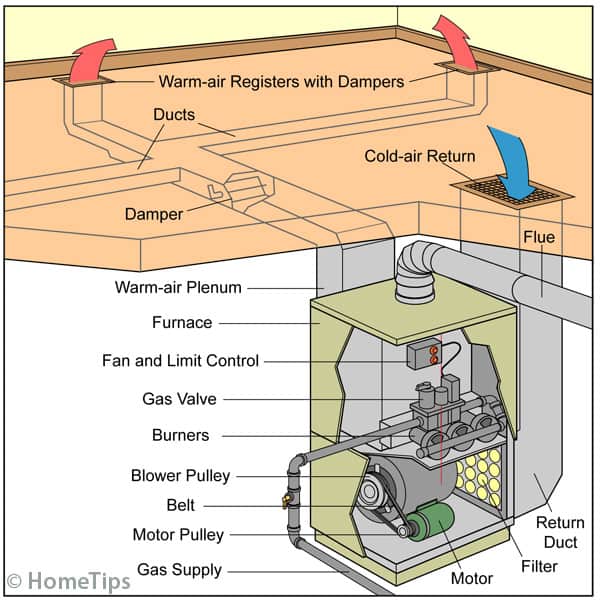
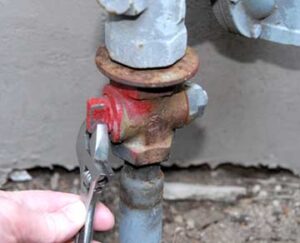
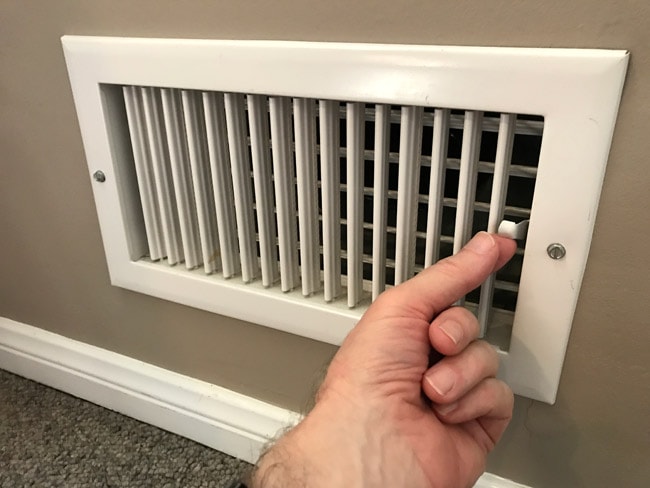
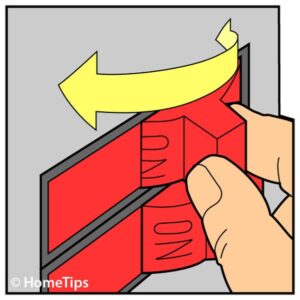
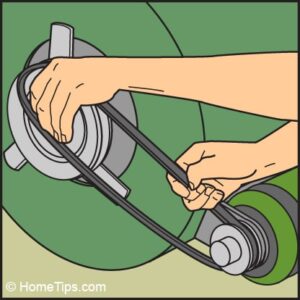
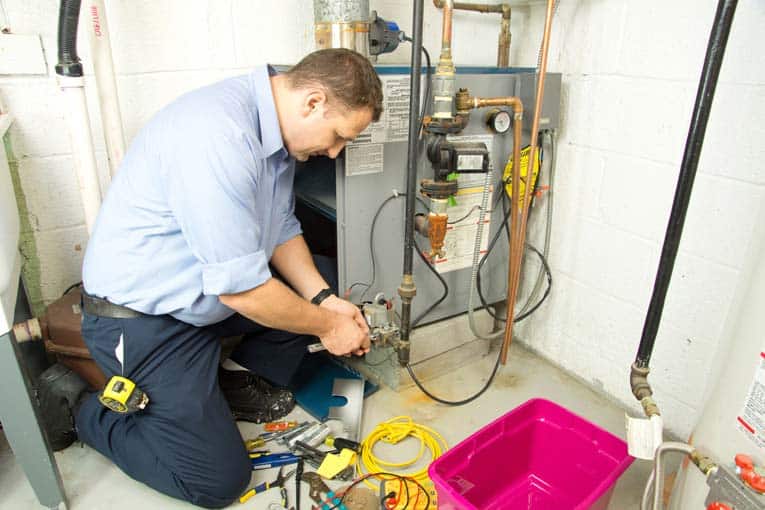
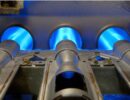

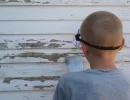

 Don Vandervort writes or edits every article at HomeTips. Don has:
Don Vandervort writes or edits every article at HomeTips. Don has:
